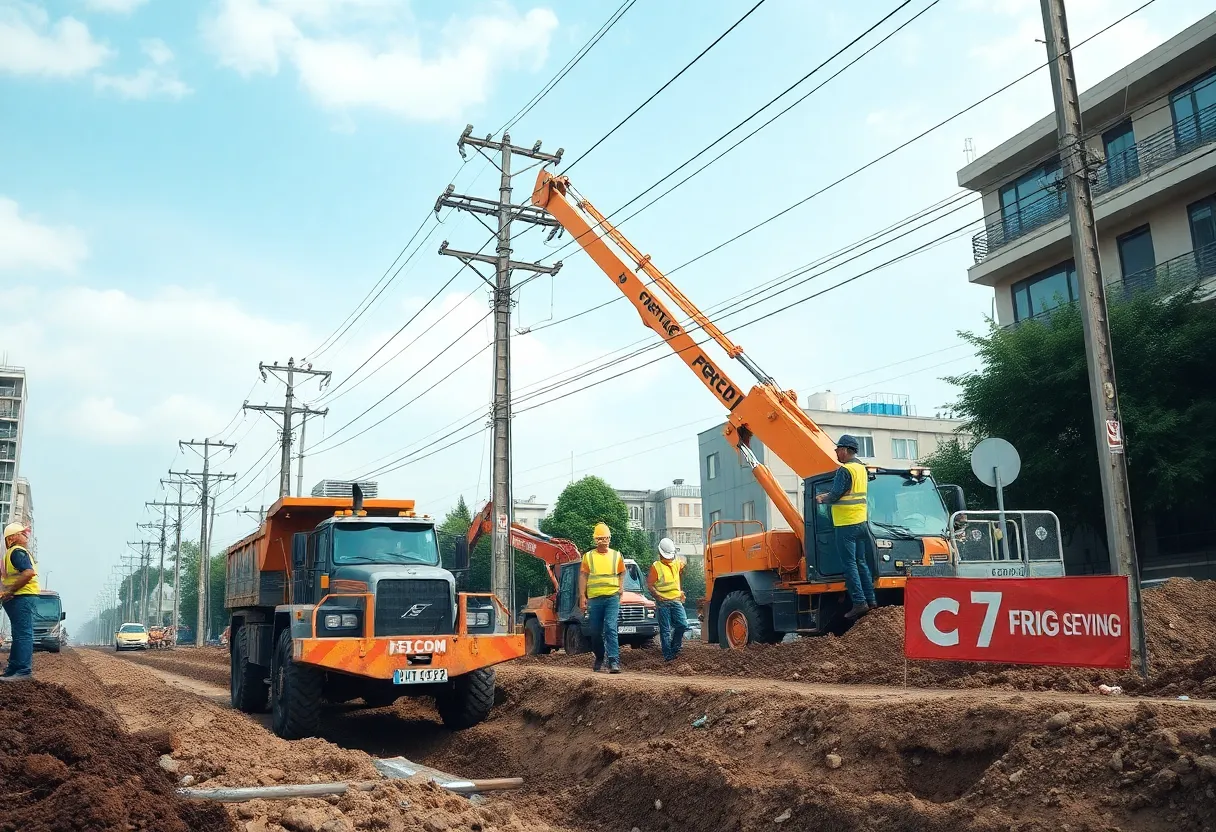News Summary
Utilities are navigating a critical transformation in geographic information systems (GIS) to enhance asset management and meet increasing customer demands. With the phased-out legacy ArcMAP systems, organizations must modernize their approaches to improve efficiency while addressing complexities during GIS migration. Key considerations include decoupling design processes from GIS to minimize disruptions and optimize workflows. The article highlights the benefits of a connected ecosystem and the importance of leveraging advanced technologies in the transition.
Utilities Advised to Decouple Design and GIS for Improved Efficiency During System Migrations
The landscape of geographic information systems (GIS) is undergoing rapid changes, making it essential for utilities to adopt effective asset management strategies. With the planned discontinuation of ArcMAP next year, utilities are urged to modernize their systems amidst increasing customer demands and expectations. The migration to advanced technology systems offers a crucial opportunity to enhance operational efficiency and lower costs.
Transitioning from Legacy Systems
Utilities are in a crucial phase where legacy systems are being phased out in favor of new technologies and providers that offer improved functionalities. However, this transition brings significant challenges. Utilities must navigate a complex landscape of data transformations and workflow alterations that can inflate costs and prolong project timelines.
The Importance of Streamlined Migration
As utilities prepare for GIS migration, it is critical to simplify this process. By doing so, they can maximize the value of their investments in digital transformation. A key aspect of this migration is evaluating the readiness of the design process. The integration of design and GIS is vital, impacting workflows related to asset management and field execution. When treated as inseparable, the migration can become convoluted, leading to potential complications and delays in project delivery.
Rethinking Design Workflows
Utilities currently face a choice between two strategies: an immediate all-in-one approach that could trigger maximum disruption, or a phased approach that may result in delayed returns on their investments. Optimally, the time to reassess design workflows is before implementing GIS migration. This advanced planning allows for the decoupling of design functions from GIS, leading to a smoother transition and enhanced project outcomes.
Enhancing Performance and Reducing Workload
Current GIS systems are not ideally suited for design tasks. These tasks are better managed using specialized tools such as CAD and Excel. Extracting design workflows early in the migration process can improve efficiency, lessen the migration scope, and lead to cleaner migration processes. The advantages of decoupling design from GIS are numerous, including reduced workloads and improved GIS performance, while minimizing the need for customizations to utility models.
Flexibility in Migration
The design phase impacts various functions like construction planning and creating digital twins. Therefore, it is important to maintain flexibility during GIS migration. Keeping design processes entrenched within GIS runs the risk of generating rigid workflows and a disconnect between systems, hindering operational efficiency.
Automation as a Solution
Automating procurement and construction workflows can help ensure that engineering standards are maintained through the decoupling of design. This level of automation can prevent costly setbacks caused by mismatches in field operations. By adopting a connected digital ecosystem, utilities can bolster efficiency and reduce risks associated with migration.
A Chance for Comprehensive Modernization
GIS migration poses an opportunity for utilities to undertake thorough modernization, enabling faster project delivery. A successful migration approach requires leveraging advanced technologies like artificial intelligence (AI) and automation. By distinctly separating design and GIS, utility teams can focus on their core areas, enhancing collaboration and informed decision-making within these domains.
Optimizing System Reliability and Project Execution
Implementing a transitional architecture will enhance system reliability, mitigate errors, and support agile project execution. Industry leaders recognize the importance of modernizing design and construction processes during GIS migration, emphasizing that timely action in decoupling design may prevent perpetuating existing inefficiencies in future migrations.
Ultimately, as utilities confront the complex demands of modern infrastructure and customer expectations, the strategic decoupling of design from GIS emerges as not just a practical recommendation, but a necessity for sustainable growth and operational success in an ever-evolving digital landscape.
Deeper Dive: News & Info About This Topic
Additional Resources
- Design News: Decoupling Design from GIS
- Wikipedia: Geographic Information System
- TCS: AI-Powered GIS Modernization for Utilities
- Google Search: GIS modernization
- TRC: Citizens Energy Group Modernizes Operations
- Google Scholar: GIS efficiency
- Business Wire: SSP Innovations Utility Network Migration
- Encyclopedia Britannica: Utility Services
- Esri: Introducing Migration Toolset
- Google News: GIS migration
Author: Construction NY News
The NEW YORK STAFF WRITER represents the experienced team at constructionnynews.com, your go-to source for actionable local news and information in New York and beyond. Specializing in "news you can use," we cover essential topics like product reviews for personal and business needs, local business directories, politics, real estate trends, neighborhood insights, and state news affecting the area—with deep expertise drawn from years of dedicated reporting and strong community input, including local press releases and business updates. We deliver top reporting on high-value events such as the New York Build Expo, infrastructure breakthroughs, and cutting-edge construction technology showcases. Our coverage extends to key organizations like the Associated General Contractors of New York State and the Building Trades Employers' Association, plus leading businesses in construction and real estate that power the local economy such as Turner Construction Company and CMiC Global. As part of the broader network, including constructioncanews.com, constructiontxnews.com, and constructionflnews.com, we provide comprehensive, credible insights into the dynamic construction landscape across multiple states.





